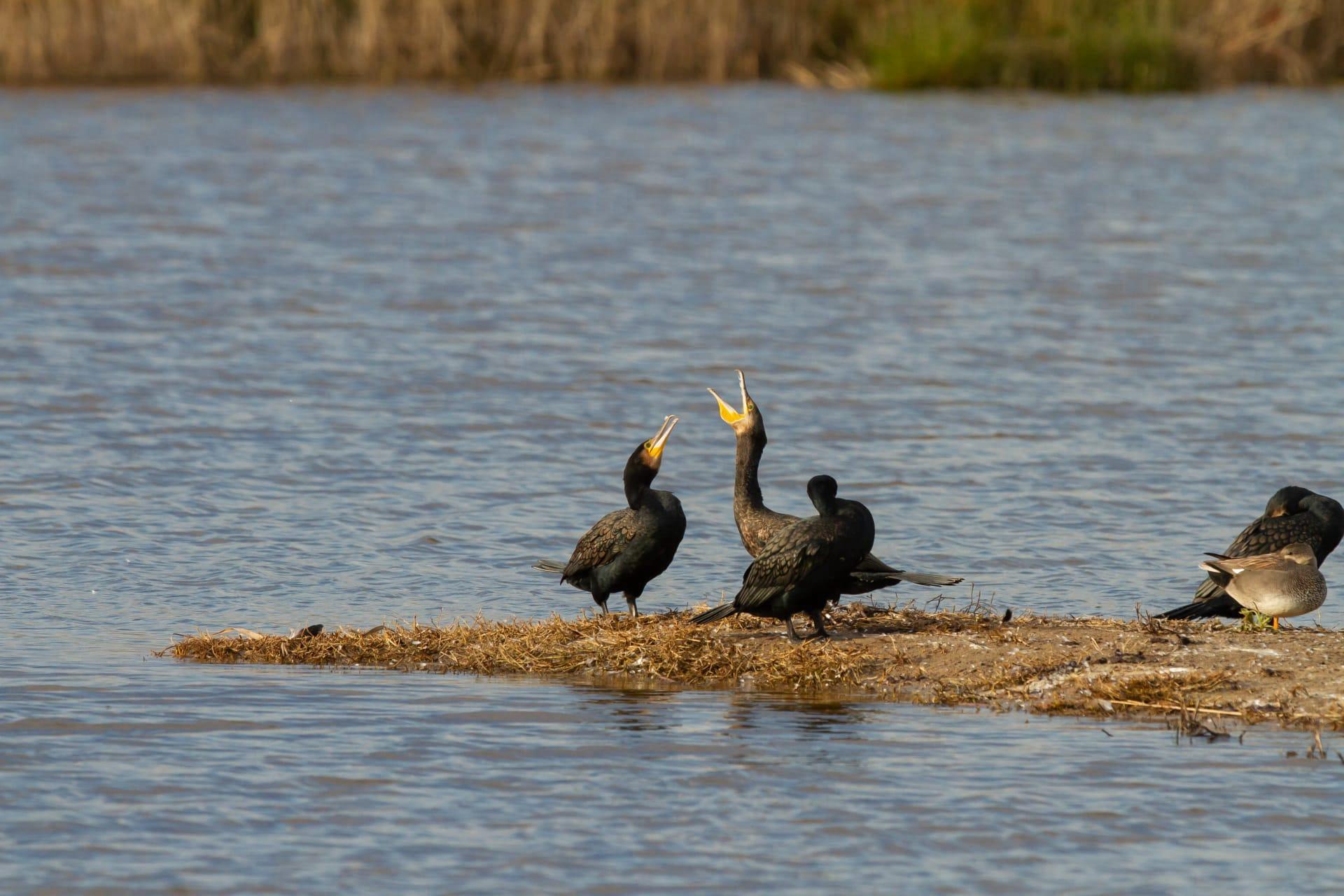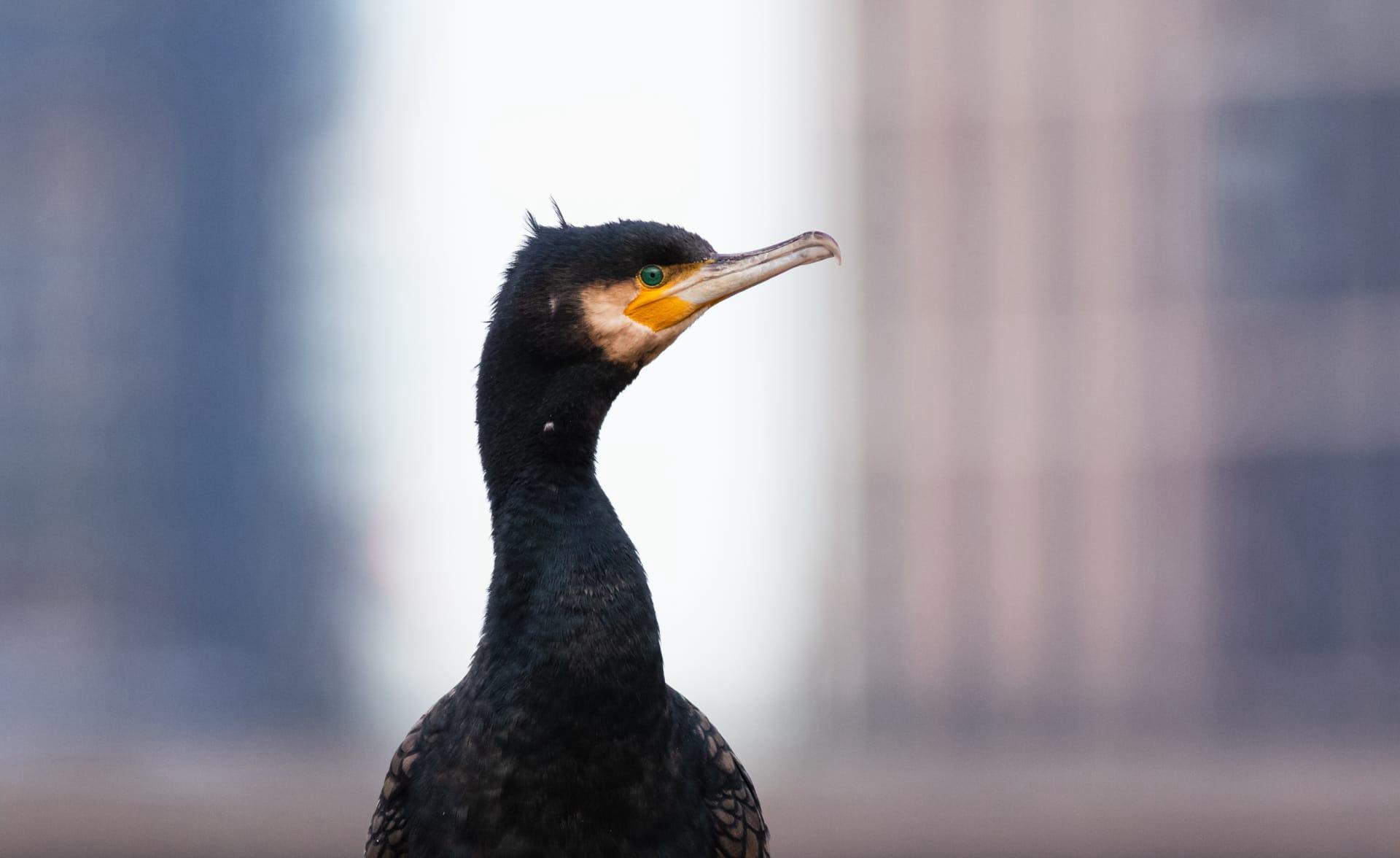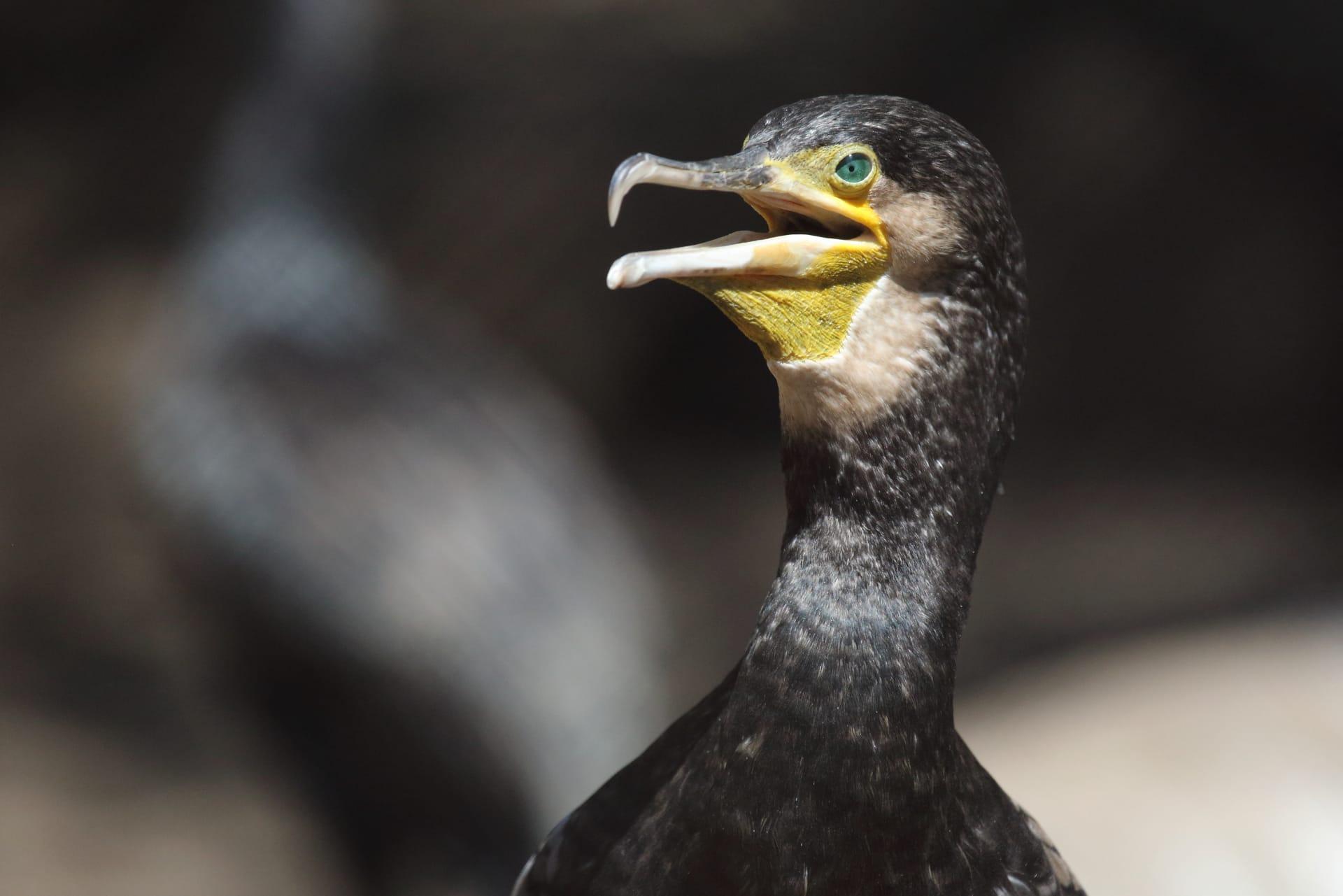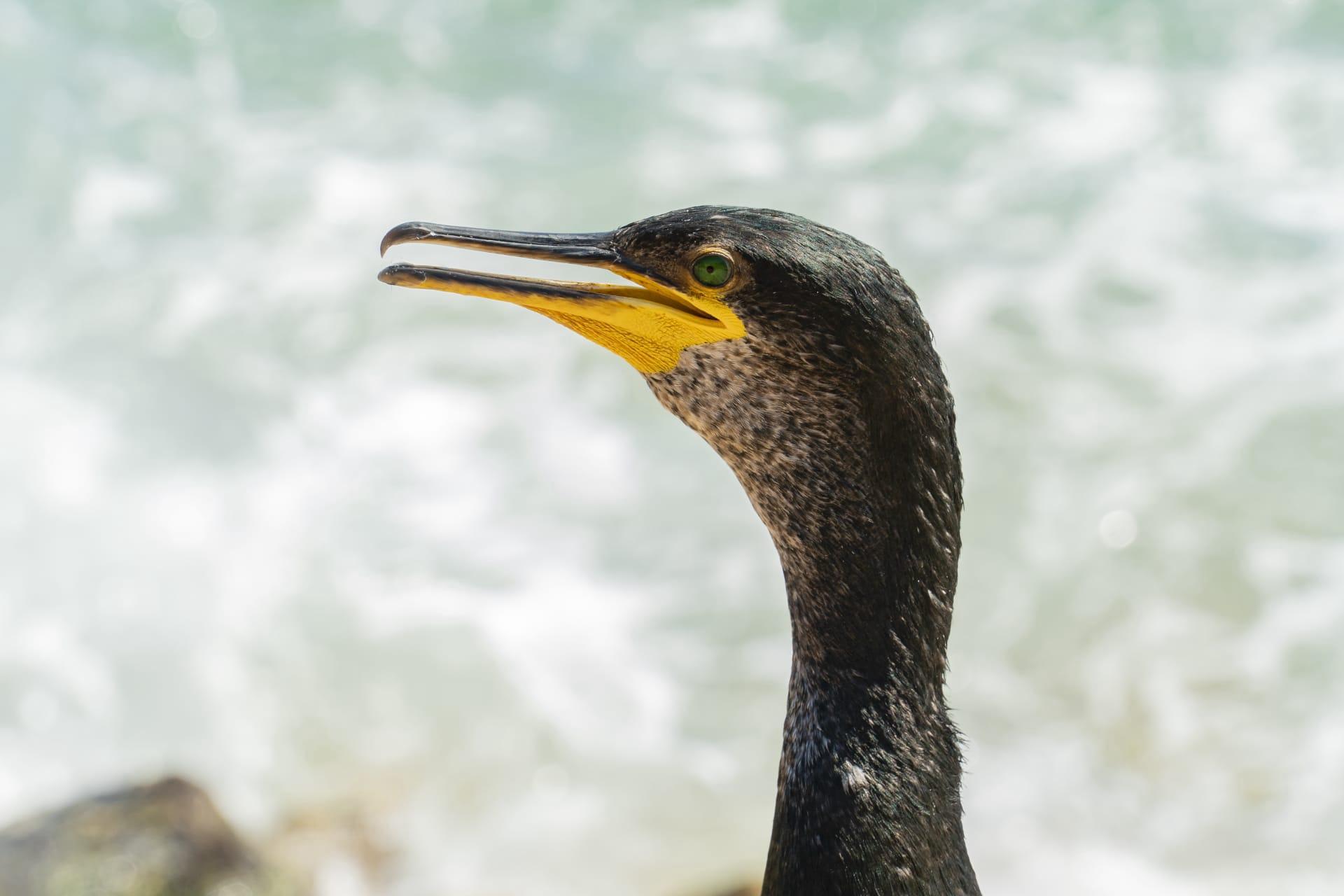Cormorant Trivia
- Home /
- Trivia Question /
- Animal /
- Cormorant Trivia
1
Question: How long can a cormorant dive and what depth can they reach?
Answer: Cormorants are expert divers. On average, a dive lasts about 30 to 70 seconds, but they can stay underwater for up to 5 minutes! They usually dive to depths of around 25 feet, but some species can reach astonishing depths of nearly 150 feet. This ability allows them to hunt fish effectively in various aquatic environments.
Question: What is unique about a cormorant's feathers compared to other water birds?
Answer: Unlike most water birds, cormorants have less waterproof feathers. This might seem like a disadvantage, but it actually helps them dive deeper and swim easier underwater. After a dive, you'll often see them with their wings spread out, basking in the sun to dry off. This unique feature sets them apart in the bird world, balancing their aquatic lifestyle with their need to maintain buoyancy and insulation.

2
Question: Do cormorants deplete fish stocks, posing a threat to local fisheries?
Answer: This is a common misconception. While cormorants are skilled fish hunters, their impact on fish populations is often exaggerated. Studies show that their diet mainly consists of non-commercial fish species, and their fishing activities rarely affect the stocks of commercial fish. It's a balance of nature where they contribute to maintaining a healthy aquatic ecosystem rather than depleting it.
Question: Can cormorants coexist peacefully with other water birds?
Answer: Absolutely! Cormorants are often seen sharing space with other water birds like herons, egrets, and pelicans. They tend to be non-aggressive and can coexist harmoniously in the same habitat. Their presence in diverse bird communities is a testament to the dynamic and interconnected nature of ecosystems.

3
Question: How far can cormorants migrate, and what triggers their migration?
Answer: Cormorants are quite the travelers! Some species migrate over 1,000 miles between their breeding and wintering grounds. Their migration is primarily triggered by changes in temperature and food availability. As adept flyers, they cover long distances, showcasing remarkable endurance and navigational skills.
Question: Are cormorants social birds, and how do they communicate?
Answer: Cormorants are indeed social birds, often found in groups, especially during breeding season. They communicate through a variety of vocalizations and body language. Their sounds range from grunts and growls to more complex calls used during courtship. Watching a group of cormorants can be quite entertaining, as they interact with each other in their colonies.

4
Question: What are the main threats to cormorant populations?
Answer: The primary threats to cormorants include habitat loss, pollution, and fishing gear entanglement. Habitat loss, often due to human activity, reduces their nesting and feeding areas. Pollution, particularly oil spills, can be devastating, as it damages their feathers' insulating properties. Lastly, fishing gear can accidentally catch and harm them, posing a significant threat to their well-being.
Question: How do cormorants hunt, and what makes them efficient predators?
Answer: Cormorants hunt by diving underwater and using their excellent vision to locate fish. Their streamlined bodies and strong webbed feet make them efficient swimmers. They catch fish with their hooked beaks and can swallow small fish whole while underwater. This combination of physical adaptations makes them agile and effective hunters in aquatic environments.

5
Question: How do cormorants care for their young, and what is unique about their nesting behavior?
Answer: Cormorant parents are quite attentive. Both parents take turns incubating the eggs and feeding the chicks. They build nests in cliffs, trees, or on the ground, often using seaweed, twigs, and other materials. What's unique is their nesting strategy - they prefer to nest in colonies, which provides safety in numbers and social interaction among the birds.
Question: Can cormorants be found worldwide, and what are their habitat preferences?
Answer: Yes, cormorants are found on every continent except Antarctica. They prefer coastal areas but can also be found inland near rivers, lakes, and wetlands. Their habitat selection is largely based on the availability of food. Cormorants are adaptable and can thrive in a wide range of aquatic environments, making them a widespread and versatile species.